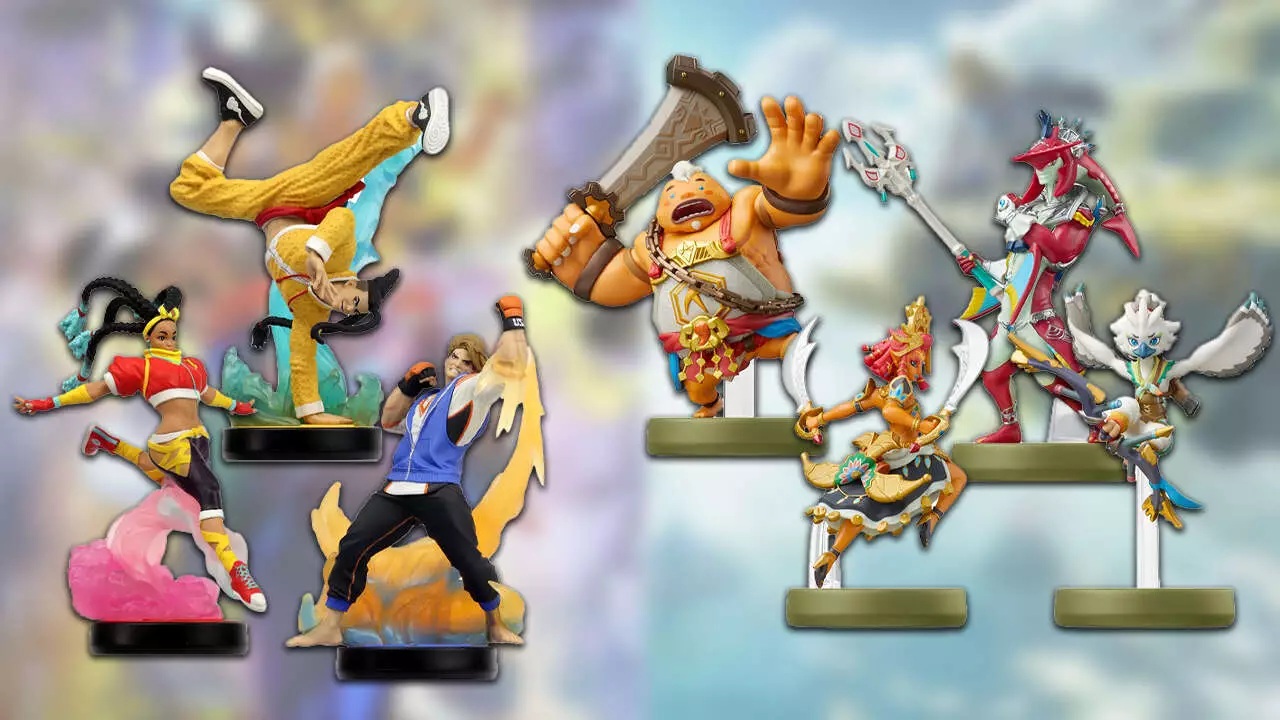When Nintendo made the announcement of price increases for first-party accessories for the upcoming Switch 2, it was notable that the new Amiibo figures tied to both The Legend of Zelda and Street Fighter went unmentioned. This omission led many to speculate that the prices of the seven Amiibo figures, which are set to release alongside the Switch 2 on June 5, would remain stable. Historically, Amiibo figures have had price points that ranged from $12 to $20, depending on the character and complexity. However, this time around, fans are facing unexpected price hikes that significantly alter the landscape of collectible gaming figures. Notably, Amiibo figures have experienced the most substantial percentage increase, leaving many scratching their heads about the rationale behind such steep pricing.
Understanding the Price Increases
The new Zelda and Street Fighter Amiibo figures have surfaced with a shocking $10 increase in their prices, pushing figures like the Tears of the Kingdom’s Champions Amiibo up to a whopping $30 each. It’s astonishing to see how the percentage increase for Amiibo compares to other products; for instance, the Switch 2 Dock Set has seen an increase from $110 to $120, reflecting a $10 hike that is less drastic, percentage-wise, than the Amiibo figures. The latter’s 62.5% increase places it in rarified air, raising questions about Nintendo’s strategy concerning its pricing.
Even more intriguing is the situation surrounding Street Fighter’s Amiibo, which are now reaching a staggering $40 each. This is perplexing when considering that each figure costs only $20 less than the game itself—free DLC included. For context, previously released Amiibo for iconic characters like Ken and Ryu maintain retail prices around $16, but can be acquired from resellers for about $25. It raises a central question: are we as consumers willing to absorb these inflated prices for the sake of collecting?
Value Proposition or Pricing Fiasco?
Nintendo’s discernible shift in pricing raises critical thoughts on value versus cost. Amiibo have traditionally served as both collectibles and functional gaming accessories that unlock exclusive content in games. For fans of The Legend of Zelda, locking in exclusive fabric designs for gliders in both Breath of the Wild and Tears of the Kingdom offers some value. However, does this justify a price leap of nearly 85% for the Zelda-themed Amiibo?
Each of the characters, from the Sage of Water, Sidon, with his extravagant jewelry, to Tulin wielding the Great Eagle Bow, presents visual appeal and in-game enhancements. Still, hardcore collectors may question the return on investment when the market for limited edition items becomes so uncertain. The price hike feels especially pronounced in a gaming landscape where fans are already stretching their budgets for new titles. The practical implications of these figures come into sharp focus when one considers the changing expectations around leisure spending during economically challenging times.
Market Implications and Collector Sentiments
As pre-orders for these much-anticipated Amiibo go live on April 24—lining up with the console preorders—the market reaction will be telling. The community sentiment fluctuates between excitement for new collectibles and a sense of betrayal from what feels like opportunistic pricing. The question looms: will collectors rally to support these figures, or will they resist due to inflated costs?
Interestingly, the emergence of the new characters, such as Kenya’s aspiring ninja Kimberly and the fierce Luke from Street Fighter, blends the nostalgic with the contemporary. While there is undeniable appeal in these figures, the financial calculations may deter casual collectors and enthusiasts alike. The previously released amiibos, like Ken and Ryu’s Smash Bros edition, often rekindle nostalgia, but higher costs might alienate new buyers or casual collectors who once found them affordable and accessible.
The Future of Amiibo Collecting
Upcoming additions, like the mysterious Amiibo based on Mineru’s Construct, only exacerbate the uncertainty. The anticipation surrounding its pricing adds an air of trepidation—will it follow in the footsteps of its overpriced brethren, or will there be an attempt to balance the scales in favor of collectors? The future landscape of Amiibo collecting certainly appears upended; those who previously embraced amiibo as essential collectibles may find themselves weighing their options differently now.
Nintendo’s pricing strategies for its beloved Amiibo figures may mark a turning point in consumer engagement with collectible gaming figures. As they dive into this new era of inflated costs, the reaction from fans remains a critical factor that can shape the future of amiibo collectibles.


Leave a Reply